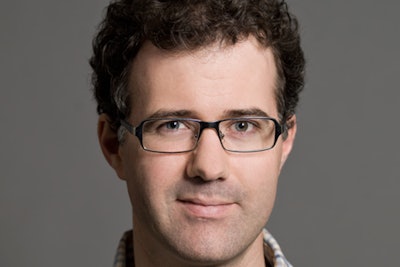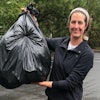
As senior editor of Wired magazine since 2010, Bill Wasik contributes stories on technology, science, and culture. But he may be best known as the person who created the concept of a flash mob when he organized the first one in 2003. Building on that experience, he subsequently authored And Then There’s This: How Stories Live and Die in Viral Culture, sharing his observations on the power of electronic communication to influence people and ideas.
Wasik will discuss how digital media have changed the way people get together offline—sharing examples that include the London riots, Occupy Wall Street, TED conferences, and his own experience with flash mobs—at the Event Innovation Forum, a new conference held at the BizBash IdeaFest in New York on October 24. We spoke to Wasik for a preview of his presentation.
You’ve said that you created the first flash mob as an almost scientific experiment. What do you mean by that?
I was really interested in viral email. Social networking was still in its very early days, so the main medium through which you would see things go viral was email. I had this idea of, wouldn’t it be fun to make a viral email that told people to come to the same place at the exact same time, which would make this virtual network of people into a physical group of people? And what would that look like and how would that go? I sent the first one out really not knowing what to expect. Over the course of that summer, not only did hundreds of people come to my events, they started to spread all over the country and all over the world. By the end of the summer, they had happened on every continent except Antarctica.
I did eight flash mobs in the summer of 2003, and almost immediately the entire phenomenon got entirely out of my control. So almost from the beginning I became more of an observer. Part of what people love about the flash mob idea is, it’s open-sourced. It’s an invitation to do it themselves and document it themselves. There’s no standard you have to live up to. One consequence of that is that, even though I had this role at the beginning, I don’t have any ownership of it, and I’m just amazed to see how much people do with it.
How have you seen flash mobs evolve since 2003?
What was interesting in the early conceptions was they were more about gathering people than about doing anything in particular. And they definitely weren’t about documenting themselves to show to the world. They were more about the experience of doing the thing in the real world. That early conception sort of died out. With the rise of YouTube and camera and video phones, the documentation now has become such a huge driver for doing flash mobs. There’s Improv Everywhere. Flash mobs have become so much about not just having this visceral experience in the real world, but also documenting it, and then you have this secondary experience of people who can see this amazing thing you did.
The use of technology and social networking tools has come a long way since 2003. They have really become an integral part of most people’s daily lives. How is that impacting the relationship of online and offline interactions?
The main thing that I think is fascinating that is going on right now is that people are able to do so much alignment of their interests and ideas, their social compatibilities, and their friendships online. So that when they come together in the real world, they have presorted themselves in a way I think is unprecedented. The crowd has been connected before they get together. They stay connected with Facebook and Instagram and real-time documentation—which adds a lot of the pleasure to being in the crowd—and then they stay connected after they are in the crowd. The physical event is not a stand-alone thing. It’s the fulfillment of connections that are being made online and becomes fodder for connections that will persist.
So do you think those online interactions—before, during, and after—are good for face-to-face events?
I think it creates a totally different type of experience. If you get comfortable with the idea that the event isn’t just a stand-alone goal in itself and is embedded in this giant universe of digital connections that happen before and persist afterward, then it can be really positive. It can make people’s experiences richer and more persistent. A lot of things that are messy about real-world events become less messy when it is an augmented event and people have access to technology. It puts the attendees in more control. One of the benefits of physical events is that it is a captive audience. You want to make certain things happen there. When the audience has on some level formed before the event itself, they have more information, and that can make the physical event more powerful.
Do you think in years to come, the continued growth of technology will mean we see fewer face-to-face events?
There might be fewer physical events, but the events become richer and more crucial. The events are the thing that can’t be commoditized. You can’t download them. The fact we can do more and more online doesn’t make that any less true. Obviously, the bad economy has had an impact. But I don’t think face-to-face events are going away. I think there may be fewer, but the ones that are there are more important.
What are you currently working on?
I have a story coming out around the end of the year about TEDx and other conferences. One of the reasons I am so excited to come [to the Event Innovation Forum] is that I’m really interested in writing more about how different organizations are using flash mobs and others sorts of impromptu crowd gatherings. I’m eager to hear from people at the conference about how they are using crowd events to promote their businesses. So I will be there trying to learn more myself.
More about the Event Innovation Forum—including the full schedule of speakers and topics, plus registration information—is here.



















